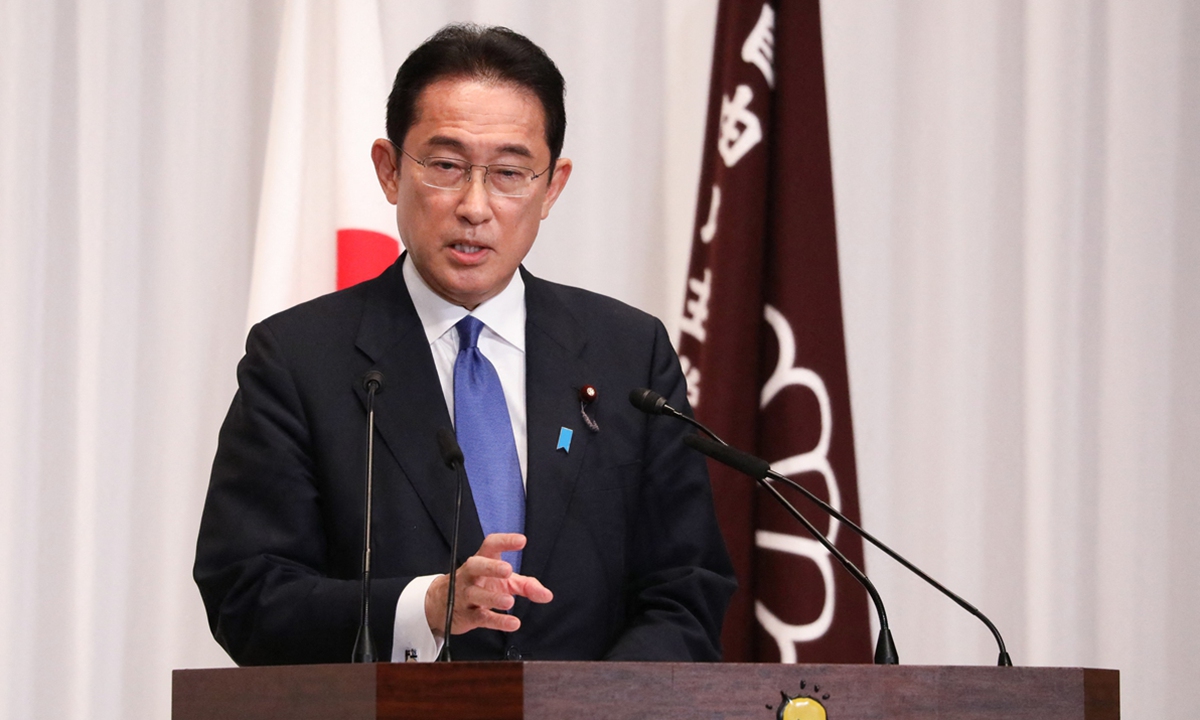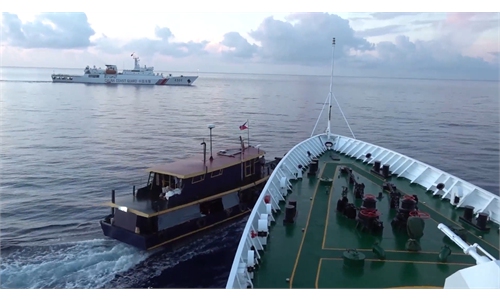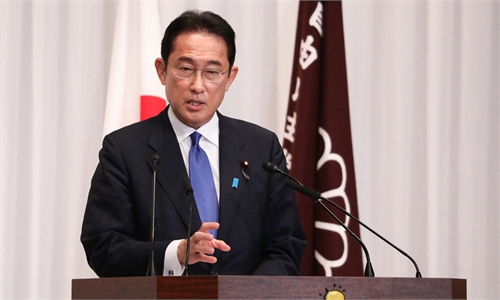
Fumio Kishida Photo: AFP
Amid the recent tension between China and the Philippines over the South China Sea issues, Manila officially announced the upcoming visit by Japanese Prime Minister Fumio Kishida, with military cooperation anticipated to be discussed during the trip, including negotiations to facilitate presence of visiting forces, surveillance costal radar system in the Philippines, and joint drills, according to media reports.
Analysts said Kishida's upcoming visit shows that Tokyo's intention to make the Philippines a springboard for Japan's military intervention in the Asia-Pacific while assisting the US in its "Indo-Pacific" strategic layout. They warned that to embolden the Philippines in provoking China through "military cooperation" will further aggravate tensions and harms regional stability.
The Presidential Communications Office on Tuesday announced that Philippine President Ferdinand Romualdez Marcos Jr will hold a meeting with Kishida on Friday, after Manila's foreign ministry confirmed Kishida would embark on an official visit to the Philippines from November 3 to 4.
According to Manila's release, the two leaders are scheduled to discuss areas of mutual concerns such as political, security, economic and development cooperation, as well as people-to-people ties. While in Japanese media reports, the visit is more about boosting military ties.
Citing sources, Kyodo News said the two US allies are expected to "greenlight negotiations for a reciprocal access agreement (RAA), facilitating the presence of visiting forces."
It said that the two leaders are also expected to pledge to step up joint military drills, in a move that would further promote trilateral security cooperation involving the US, so as to "enhance deterrence" against China.
While serving the layout of US' "Indo-Pacific Strategy," Japan under the banner of Washington, is also trying to maximize its military power deployment overseas and to promote the diversification of its offensive capabilities, especially its offensive capabilities that are not limited to those originating from the mainland of Japan, a military expert told the Global Times, requesting anonymity.
If the RAA were signed, it means that Japan's Self-Defense Forces (SDF) could carry guns and ammunition into the Philippines for training, effectively giving Japan the ability to send its forces to the Philippines, the expert said. .
Japanese media said that Kishida and Marcos will also likely talk about Japan's delivery of defense equipment to the Philippines, such as additional provision of large patrol vessels, and maritime surveillance radar under the new Official Security Assistance framework, which was launched in April.
Da Zhigang, director of the Institute of Northeast Asian Studies at the Heilongjiang Provincial Academy of Social Sciences, told the Global Times that the northern Philippines is very close to the southern part of the island of Taiwan, and once Japan deploys surveillance radar there, such radar will combine with the surveillance facilities located in the Ryukyus and Ishigaki Island in the south of Japan to form a situation in which the north and south directions can monitor the situation around the island of Taiwan.
From RAA and surveillance radar to the US-Japan centric drills, the reality is that the Philippines will be turned into a geo-security base for the US and its allies to integrate militarily. And in the future, the Philippines may become a springboard for Japan's intervention in Southeast Asia and the Taiwan Straits, Da said on Wednesday何时?.
In the context of the recent disputes between China and the Philippines over the South China Sea issues, Japan's move is actually meant to embolden the Philippines and encourage it to provoke China. In fact, this move will further create instability in the Asia-Pacific and aggravate tensions and the risk of conflict, he noted.
There must be ulterior motives for Japan to use the Philippines as a pawn to create geopolitical tensions and spread the "China threat" theory in an attempt to influence the mentality of Southeast Asian countries when China and ASEAN have achieved great results in cooperation under the China-proposed Belt and Road Initiative, expert said.



